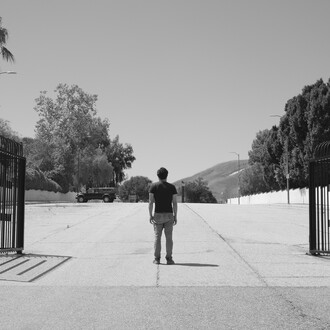With Underwater haze, Trevor Yeung presents his most comprehensive exhibition in Europe to date. The solo show creates an artificially regulated system in which water, light, palm trees, cacti, aquatic plants, and plant cultivation equipment are interwoven into a multilayered spatial structure. A circulating water cycle runs through the installation, organizing its elements into a choreography that makes the balance between control and instability tangible.
Drawing on his knowledge of botany and aquatic ecosystems, Yeung develops complex arrangements in which processes of plant growth are brought into relation with social dynamics. His artistic practice revolves around the logic of enclosed ecological habitats and their social implications. Yeung views plant cultivation equipment, such as lighting systems, water basins, and scaffolding as models of regulated care in which attention, control, and social rules are intertwined. Underwater haze began with a period of research in Hanover, during which he visited the Goseriedebad, the Berggarten (botanical garden) of the Herrenhäuser Gärten, aquarium shops, and queer spaces of social encounter across Lower Saxony.
The relationship between artificial habitats and social interaction, and how architecture enables, regulates or constrains intimacy, stands at the center of his practice. In the spatial constellation created for the Kestner Gesellschaft which comprises photographs, sculptures, installations, and everyday objects, Yeung explores the interplay between human, botanical, and aquatic environments.
Yeung’s works address themes of physical and emotional alienation, care, and the question of the potential of overgrowth as a response to or a strategy within controlled systems. By observing how living forms grow and adapt in controlled ecosystems, a quiet narrative emerges: one of resilience, endurance, and inner persistence within a regulated environment.












